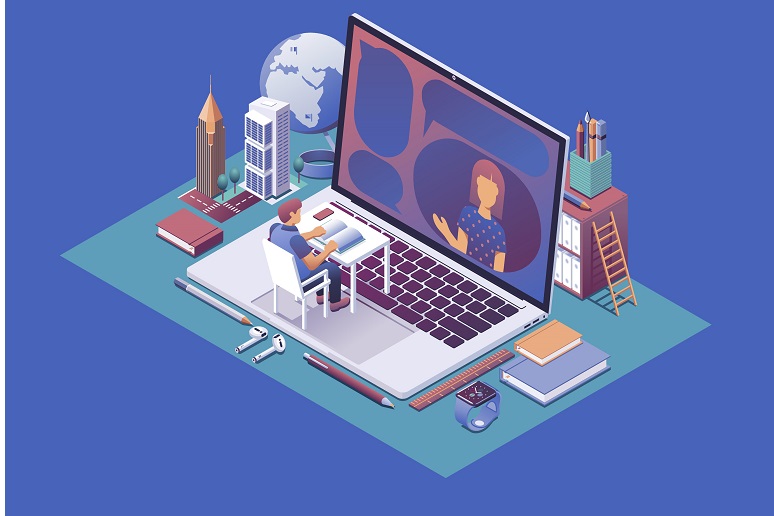WeLearn is a learning solutions and workforce development company that provides learning services to help employees evolve their skills.
WeLearn designs experiences that connect with people through facilitated, collaborative learning. WorkSpace Connect recently spoke with
Sean Stowers, CEO, and chief learning officer, WeLearn, to gain a deeper understanding of services provided, the significance of workplace education, and recommendations for companies looking to revamp their workplace learning strategy or create a new one from scratch.
Responses have been edited for conciseness and clarity.
Tell us about yourself and your career in corporate learning.
Stowers: I started my career in corporate learning in 1998, working for a division of IBM focused on end-user software training. At the time, IBM was pivoting to being a services company—so it was a training ground for learning how to sell services. After four years at IBM, I went to work for a financial training division of a large publishing company, and over time, [I] worked in numerous roles, including selling custom publishing services, custom content development, and large outsourcing engagement, as well as focusing on workforce development solutions like tuition assistance.
Also, can you share a bit about WeLearn and the services it provides?
Stowers: WeLearn is a full-service learning company focused on building better humans through learning. We consult, develop custom content and learning experiences, advise on learning technologies, and partner on workforce development programs—like upskilling and reskilling.
Why do you think learning and education are so important from an employee experience perspective? How does workplace education create happier employees and more productive teams?
Stowers: Learning and education are vital to the employee experience because it communicates a company’s investment in you and an individual. We see the data that says people will quit a job and join a new company for better developmental experiences—so it’s not solely about the manager or pay [rate]. I think that’s why learning and education are so important in the employee experience.
Going off that, what would you say to workplaces looking to either revamp their workplace learning strategy or create a new one from scratch. Where do they even begin?
Stowers: The first thing I would recommend is not to assume all of your employees have the same relationship with learning. Learning is very personal: some folks—myself included—have great relationships with learning and gravitate towards it. Others haven’t always been successful in learning and may not have been supported in their efforts, so it’s important to understand the personas of your learners. This is especially important in organizations with frontline workforces that may look vastly different than their corporate counterparts—and have very different learning needs.
An example of this is the work [WeLearn is] doing with healthcare organizations to build allied health pipelines for clinical medical assistants, pharmacy tech roles, etc. In this case, [WeLearn] developed an approach to help organizations identify potential employees who want to move from non-clinical to clinical roles and upskill them. But WeLearn also created a model for working with hospitals to upskill and skill in a pre-hire capacity. In that model, [WeLearn] works to remove as many barriers to training as possible to attract people who most want those jobs but may have had the least access to the opportunity to obtain them.
The second piece of advice I would give is—don’t be afraid to pilot and try something new. I think too often, fear of the unknown or allowing perfect to be the enemy of good holds us back.
In terms of facilitating education, workplaces today also have a host of tools available to them from LinkedIn Learning, various cloud platforms, and much more. So, how should workplace leaders think about the technology decisions that might accompany rethinking their workplace learning approach?
Stowers: This question is really important—and increasingly so as we continue to be in this hybrid environment. I think that technology is great—and has done tremendous things to facilitate learning. But we have to continue to think about our learners when we deploy it.
The pandemic highlighted some disparities regarding access to broadband and technology, and I think now more than ever, thinking about your employee's access to technology is going to be super-critical. The other piece here is as workforces continue to become hybrid, organizations will need to consider the equity in the modalities of training they deploy. I.e., are [workforces] delivering the experience to their remote workers as robust as the experience they’re delivering to in-person audiences?
You say, “WeLearn’s service can boost engagement from learners.” How does the company define and measure engagement?
Stowers: I think learning in general (and not only from WeLearn) can boost employee engagement. Learning boosts engagement if it propels the learner forward—they understand what’s in it for them—and see it as an investment in themselves. Longitudinally, measuring engagement from learning comes down to looking at skill and capability attainment. [For example] are your employees advancing in their roles, are they staying with you longer, and are they happier?
If we do our job right, and learners are more engaged with the content, they retain the information and apply it on the job.
Amid the “Great Resignation”—what is WeLearn’s strategy for retaining employees?
Stowers: For [WeLearn], retaining our team is about focusing on the work we do for our clients, maintaining great communication, and being good humans to each other. When I think about 'great communication' in this context, I am talking about having an open dialog about all things good and not so good. I think a lot of an organization's communication breaks down when things get tough, and that's when employees become disaffected—and we try to avoid that pitfall here [at WeLearn]. So we celebrate and lift each other when things require celebrating—and we openly talk when things go wrong and sideways. Never with judgment, but with an open mind, and that's what I mean by maintaining 'great communication.'



